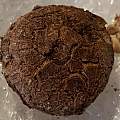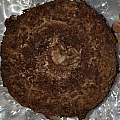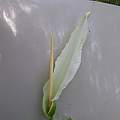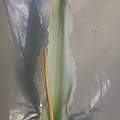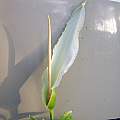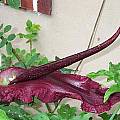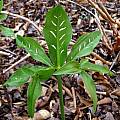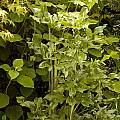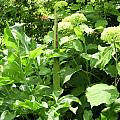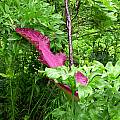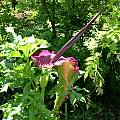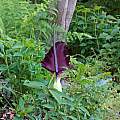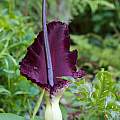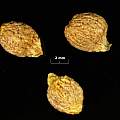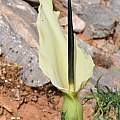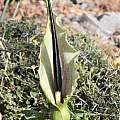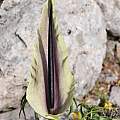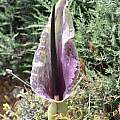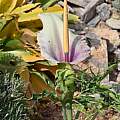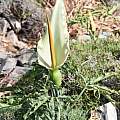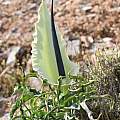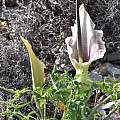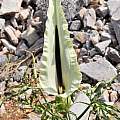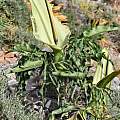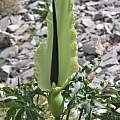Dracunculus is a small genus of Mediterranean aroids in the Araceae family.
Dracunculus canariensis Kunth in native to the Canary Islands, Madeira. Photos of seeds and tubers of the white form by Ann Maree Davey. Photos of flowers of the white form by Ray Mills
Dracunculus muscivorus (L.f.) Parl. is a synonym of Helicodiceros muscivorus (L.f.) Engl. and is pictured and described on the Helicodiceros wiki page.
Dracunculus vulgaris Schott has a native range from south central Europe to western and southwestern Turkey and northeastern Algeria. It will make a sensation when it blooms in your garden. Every fly in the neighborhood will arrive. The spathe is nearly a yard long and eighteen inches wide; the spadix is the size of an adult's forearm. The stench is the typical aroid stench. It has been grown in northern European gardens since at least the sixteenth century. This grows in a protected spot in the Maryland garden of Jim McKenney who took the first photo of the flower. The second photo, of the emerging foliage, was taken March 2007 by Jay Yourch. The third picture shows a clump with one yellowish spathe emerging. The plant is 160 cm. tall. In the background and at left Hydrangea elegans is showing the first buds of flowers. The fourth picture taken one week after shows the spathe nearly 40 cm. long, still folded, with a margin turning to purple. The plant is now more than 180 cm tall. In picture five after four days the spathe is completely unfolded, thick and heavy. In the meanwhile I removed the white Hydrangea elegans growing over the Dracunculus. In picture six after two days with rain, the spathe began bending down. Photos three through six were taken by Giorgio Pozzi, May 2008 .
Photos 1 and 2 below were taken by John Lonsdale; photo 3 of seed by David Pilling.
The spathe is dark reddish-purple with a blackish-purple spadix, but in a very few locations of the island of Crete, Greece it is possible to find a great color variability as shown in the following photos taken in habitat by Gianluca Corazza

